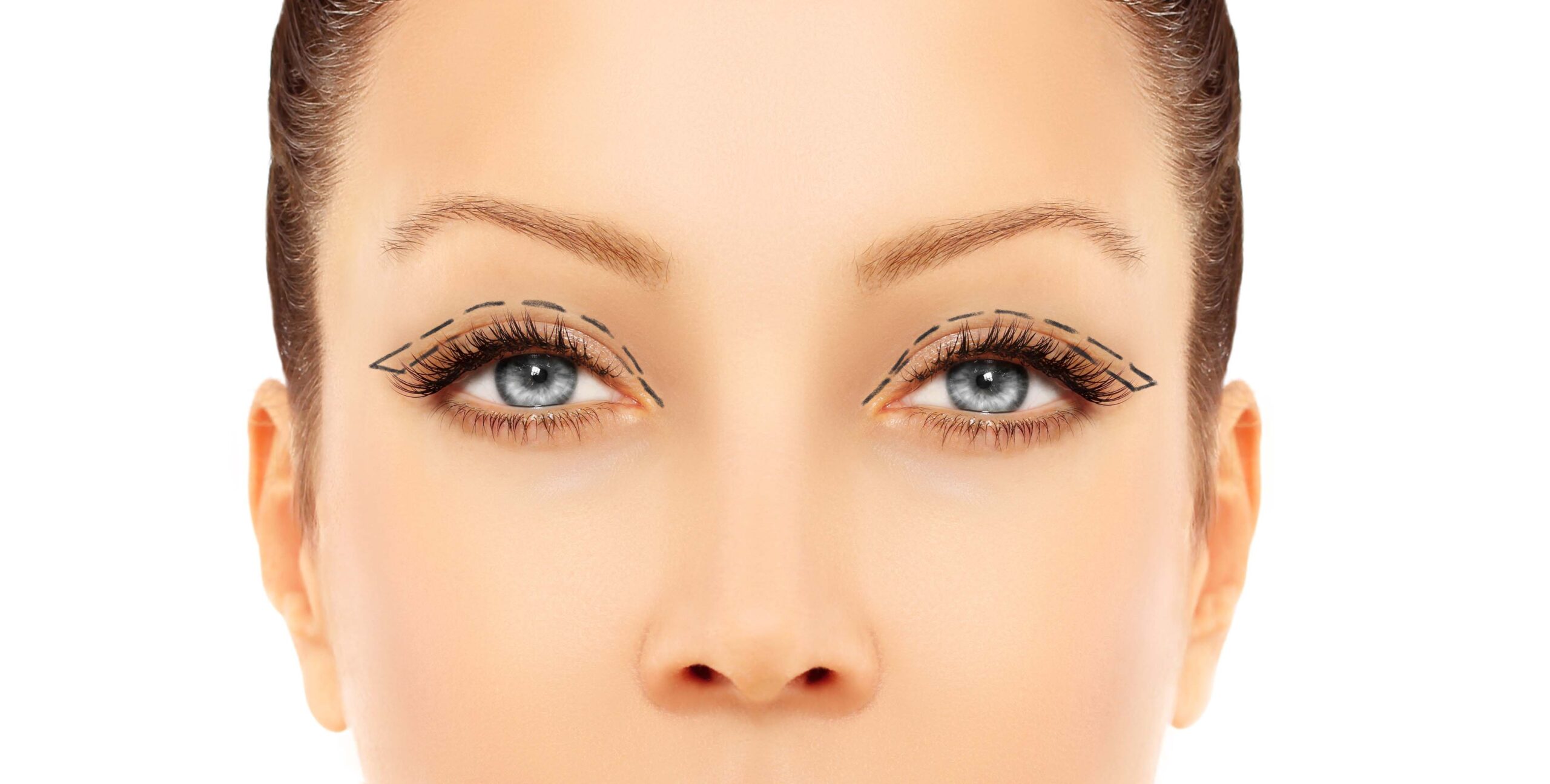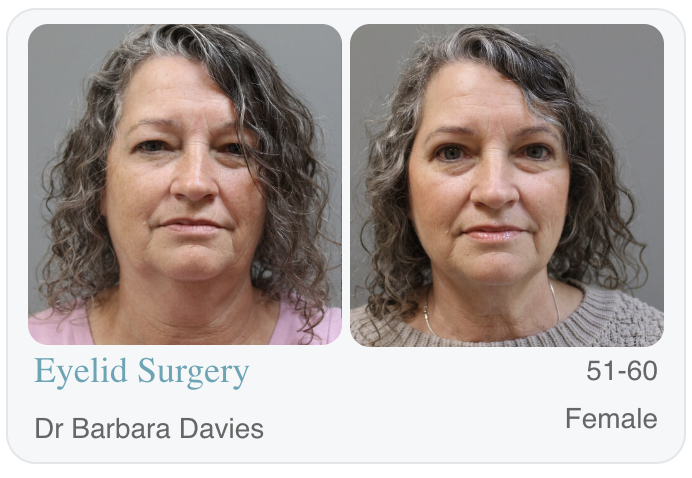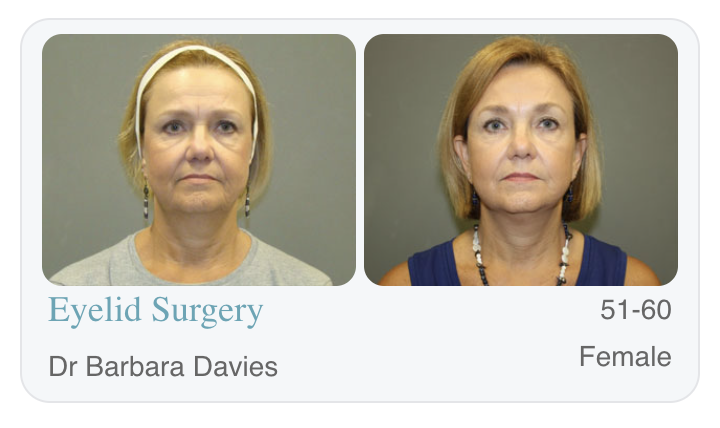Blepharoplasty (Eyelid Surgery) in Savannah, GA
The eyes are often the first features of the face to reveal signs of aging. Our blepharoplasty procedures can help diminish these signs and restore a youthful look to the eyes, which can take years off your overall appearance. Looking for eyelid surgery near you? We welcome patients from Savannah and the neighboring cities of Chatham County, GA, as well as Bluffton, SC and surrounding areas.

What Is Blepharoplasty For?
Blepharoplasty, or eyelid surgery, is a facial surgery technique that is used to rejuvenate the eyelids. Over time, the eyelids naturally begin to droop due to the gradual effect of gravity on your skin. For many patients, the main concern is that this can create a tired or weathered appearance. For some, eyelid drooping can also impair vision.
If you are experiencing either of these problems a blepharoplasty is the perfect solution. Eyelid surgery gets the desired effect by trimming excess skin and fat from the eyelids. It can restore a youthful appearance to the eye area and help you look years younger. When sagging eyelid skin causes vision impairment, blepharoplasty removes excess skin and restores vision.
This technique can be performed on the upper eyelids or lower eyelids, or both, depending on your treatment needs.
Before & After Pictures


Who Can Get Blepharoplasty?
Most people who benefit from blepharoplasty are in their 40s, 50s, or older, as it’s during and after middle age that eyelid sagging starts to become prominent. If sagging eyelids make you look older than you really are—or are affecting your vision—you might be a good candidate for this procedure.
Are There Any Alternatives to Blepharoplasty?
Blepharoplasty is the only option that provides a long-term solution to the problem of drooping eyelids. There are other options that may provide short-term solutions for some people.
- Eyelid tape is used to create an eyelid crease or improve eyelid crease definition. It lasts for several hours per application, so you need to apply it fresh on each day that you want to use it.
- Dermal fillers, such as JUVÉDERM® and Restylane®, provide a longer-term solution to sagging eyelids. The results of these injections last for several months but may not be the right solution for everyone. If your drooping eyelids are the result of excess eyelid skin, simply plumping up the eye area may not be the best option.
- BOTOX® may give the eye area a more youthful appearance if frown lines are a problem.
- Radiofrequency treatments stimulate collagen production. This can firm the skin, restore plumpness to the eye area, and reduce fine lines and wrinkles.
What Happens at a Blepharoplasty Consultation?
During your consultation, you’ll meet with a plastic surgeon to talk about your goals for treatment and the results you can expect. The surgeon will examine your eye area to get an idea of what your treatment needs are and use this information to tailor the procedure for you.
Make sure to ask any questions you have about the procedure, like:
- Preparation
- Price
- Recovery
If there’s any information you need to help you feel comfortable about having a blepharoplasty, don’t hesitate to ask.
How Should I Prepare for Surgery?
Your surgeon will give you instructions on preparing for eyelid surgery. It’s important to follow these instructions exactly, as this helps ensure that you’re in the best physical shape for surgery. It also helps your recovery go more smoothly.
For instance, if you’re taking certain medications, your surgeon may recommend you stop taking them for a couple of weeks prior to surgery. This may include blood thinners and other drugs that affect blood clotting.
If you’re a smoker, your surgeon will recommend you stop smoking prior to surgery. This is important because smoking reduces blood oxygen, making surgery riskier, and slowing down your post-surgery recovery time.
What Is Blepharoplasty Surgery Like?
Eyelid surgery begins with using the appropriate anesthesia, ensuring our patients receive a safe and comfortable treatment.
The surgery starts with incisions in the eyelids. For this step, incisions are made within the natural folds of your eyelids, so they will be well-concealed following treatment. Through these incisions, we remove excess skin and fat to produce the desired appearance. We can also redistribute eyelid fat to further contour the area around the eyes. After one to two hours of surgery, the incisions are closed, and treatment is complete.
What Is Blepharoplasty Recovery Like?
Blepharoplasty is a relatively minor procedure. Most patients can go home the same day as they have the surgery. However, if you have other procedures at the same time, your recovery will be longer, and you may need to stay overnight.
After a blepharoplasty procedure, it is common to experience bruising, swelling, and blurred vision for several days. You will need someone to drive you home, and you will need to take some time off work and other activities for at least a week. We recommend resting the eyes as much as possible in the days following your surgery. Most symptoms resolve within two weeks of treatment, and you can expect to return to your usual activities.
What Are the Risks and Complications Associated with Eyelid Surgery?
If you decide to have a blepharoplasty, your plastic surgeon will spend some time discussing the risks and complications of surgery with you. It’s important to understand these before having the surgical procedure, so you can give informed consent. Make sure to ask any questions you have.
Some risks are associated with any surgery. They include:
- General anesthesia: Between 1 in 5,000 and 1 in 10,000 people have an allergic or sensitivity reaction to general anesthesia. It’s extremely rare but can be dangerous. If you’ve had anesthesia before without any problems, it’s unlikely you’ll have a dangerous reaction in the future.
- Infection: Affects 1% to 3% of people who have surgery. You can reduce the risk by keeping incisions clean and dry and taking any antibiotics as instructed by your surgeon.
- Blood clot: Your body’s clotting reaction temporarily increases after surgery, leading to a higher risk of blood clots. Blepharoplasty is a minor surgery with a short recovery time, so the risk is relatively low.
- Hematoma or bleeding: There’s a small risk—under 1%—of developing a major hematoma after surgery.
Possible complications of blepharoplasty include:
- Temporary vision problems: For instance, blurred vision or double vision. This usually lasts only a few days.
- Acne: Tiny whiteheads may appear during healing. They can be removed by your surgeon.
- Eye closure problems: If too much skin is removed during surgery, it may result in difficulty closing the eyes, especially during sleep. An experienced surgeon can typically avoid this issue.
- Changes in eye symmetry: This may result from uneven swelling or healing. It’s usually temporary, but in rare cases a slight asymmetry may be permanent.
- Ectropion: This is extremely rare and happens if the lower lids start to pull away from the eyes. When it does occur, it may need further surgery to fix.
What Blepharoplasty Results Can I Expect?
Some results from the blepharoplasty procedure will be noticeable immediately, but your full results won’t be visible until swelling and other side effects subside. Blepharoplasty is a minor, minimally invasive surgical procedure. As such, most side effects and swelling subside within a week or two.
Your surgeon will carefully make surgical incisions in your natural eyelid crease. Once the incisions heal, your scars will be almost invisible. For most people, it’s virtually impossible to see any signs of blepharoplasty once the scars are fully healed.
Are the Results of Blepharoplasty Permanent?
Once the eyelid surgery procedure is performed, the results are permanent. However, the natural aging process will continue to affect your eyelids and other parts of your face.
Are you ready to refresh your appearance with eyelid surgery? Contact us today to schedule your consultation for a blepharoplasty.
